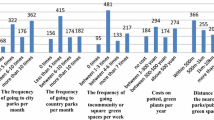Abstract
With the rapid development of education cause, the increasing energy consumption of school buildings is gradually causing widespread concern in recent years in China. This paper presented an analysis of energy consumption of 270 schools located in the city of Tianjin, China. The analysis focused specifically on calculating the space heating energy consumption indexes and non-heating energy consumption indexes of different types of schools, aiming at providing reliable and precise data for the government to elaborate policies and measures. The space heating energy consumption of schools adopting district heating and gas boiler were 92.04 kWh/(m2·a) and 64.25 kWh/(m2·a), respectively. Comparing to the schools without a canteen, the non-heating energy consumption index of schools with a canteen can increase by 8%–37%. Furthermore, clustering of different energy sources, the total primary energy consumption indexes were also presented. Space heating energy consumption accounted for approximately 64%–79% of the total primary energy consumption. When using time-sharing control and self-contained gas boiler instead of district heating, an amount of almost 27.8 kWh/(m2·a) and 77.5 kWh/(m2·a) can be saved respectively. Through extensive statistical analysis of the data collected, this paper demonstrated that gross floor area, heating energy source and canteen had a close relationship with the total primary energy consumption regarding complete schools. Eventually, a linear regression equation was established to make a simple prediction about the total energy consumption of existing complete schools and to estimate the energy consumption of complete schools to be built.
Similar content being viewed by others
References
Building Energy Research Center of Tsinghua University. 2013 Annual Report on China Building Energy Efficiency. Beijing: China Architecture & Building Press, 2013
Zhou X, Yan J W, Zhu J W, Cai P P. Survey of energy consumption and energy conservation measures for colleges and universities in Guangdong province. Energy and Building, 2013, 66: 112–118
GPG343 Good Practice Guide. Saving energy—a whole school approach. 2014-06, http://www.skoool.ie/uploadedfiles/GPG343.pdf
Desideri U, Proietti S. Analysis of energy consumption in the high schools of a province in central Italy. Energy and Building, 2002, 34(10): 1003–1016
Filippín C. Benchmarking the energy efficiency and greenhouse gases emission of school buildings in central Argentina. Building and Environment, 2000, 35(5): 407–414
Corgnati S P, Corrado V, Filippi M. A method for heating consumption assessment in existing buildings: a field survey concerning 120 Italian schools. Energy and Building, 2008, 40(5): 801–809
Issa M H, Attalla M, Rankin J H, Christian A J. Detailed analysis of electricity, water, and gas consumption quantities and costs in Toronto’s public schools. Canadian Journal of Civil Engineering, 2010, 37(1): 25–36
Kim TW, Lee K G, Hong WH. Energy consumption characteristics of the elementary schools in South Korea. Energy and Building, 2012, 54: 480–489
Santamouris M, Mihalakakou G, Patargias P, Gaitani N, Sfakianaki K, Papaglastra M, Pavlou C, Doukas P, Primikiri E, Geros V, Assimakopoulos M N, Mitoula R, Zerefos S. Using intelligent clustering techniques to classify the energy performance of school buildings. Energy and Building, 2007, 39(1): 45–51
Thewes A, Maas S, Scholzen F, Waldmann D, Zurbes A. Field study on the energy consumption of school buildings in Luxembourg. Energy and Buildings, 2014, 68(Part A): 460–470
Building Research Energy Conservation Support Unit. Saving energy in schools, energy consumption guide 73. Watford, UK, 1998, http://www.thenbs.com/PublicationIndex/DocumentSummary.aspx?DocID=282939
Katafygiotou M C, Serghides D K. Analysis of structural elements and energy consumption of school building stock in Cyprus: energy simulations and upgrade scenarios of a typical school. Energy and Building, 2014, 72: 8–16
Butala V, Novak P. Energy consumption and potential energy savings in old school buildings. Energy and Building, 1999, 29(3): 241–246
Hernandez P, Burke K, Lewis J O. Development of energy performance benchmarks and building energy ratings for non-domestic buildings: an example for Irish primary schools. Energy and Building, 2008, 40(3): 249–254
Dimoudi A, Kostarela P. Energy monitoring and conservation potential in school buildings in the C’ climatic zone of Greece. Renewable Energy, 2009, 34(1): 289–296
Theodosiou T G, Ordoumpozanis K T. Energy, comfort, and indoor air quality in nursery and elementary school buildings in the cold climatic zone of Greece. Energy and Building, 2008, 40(12): 2207–2214
Hong T, Koo C, Jeong K. A decision support model for reducing electric energy consumption in elementary school facilities. Applied Energy, 2012, 95: 253–266
Gaitani N, Lehmann C, Santamouris M, Mihalakakou G, Patargias P. Using principal component and cluster analysis in the heating evaluation of the school building sector. Applied Energy, 2010, 87(6): 2079–2086
Baker K J, Rylatt R M. Improving the prediction of UK domestic energy-demand using annual consumption-data. Applied Energy, 2008, 85(6): 475–482
Lam J C, Wan K K M, Liu D, Tsang C L. Multiple regression models for energy use in air-conditioned office buildings in different climates. Energy Conversion and Management, 2010, 51(12): 2692–2697
Perez Y V, Capeluto I G. Climatic considerations in school building design in the hot-humid climate for reducing energy consumption. Applied Energy, 2009, 86(3): 340–348
He P. Research on carbon trading methodology in heat metering of residential building. Dissertation for the Master’s Degree. Tianjin: Tianjin University, 2013
National Bureau of Statistics China. China Energy Statistical Yearbook 2012. Beijing: China Statistic Press, 2012
Department of Building Science of Tsinghua University. DeST launcher. 2014-06, http://update.dest.com.cn/zh-cn/index.html
State Electricity Regulatory Commission. Electricity regulatory annual report 2010. 2010, http://www.serc.gov.cn/zxfw/zlxz
Ministry of Housing and Urban-Rural Development of the People’s Republic of China (MOHURD). Design Standard for Energy Efficiency of Civil Buildings. Beijing: China Architecture & Building Press, 1995
Beusker E, Stoy C, Pollalis S N. Estimation model and benchmarks for heating energy consumption of schools and sport facilities in Germany. Energy & Environment, 2012, 49: 324–335
Author information
Authors and Affiliations
Corresponding author
Rights and permissions
About this article
Cite this article
Xing, J., Chen, J. & Ling, J. Energy consumption of 270 schools in Tianjin, China. Front. Energy 9, 217–230 (2015). https://doi.org/10.1007/s11708-015-0352-z
Received:
Accepted:
Published:
Issue Date:
DOI: https://doi.org/10.1007/s11708-015-0352-z




